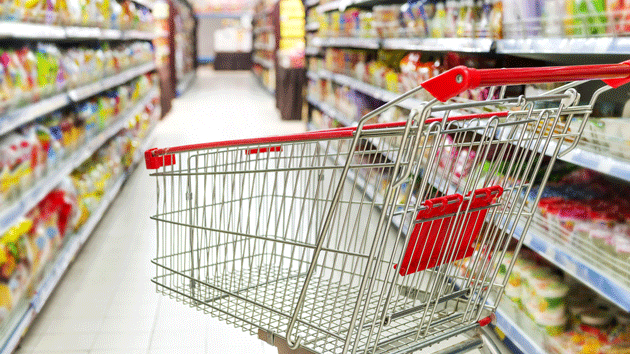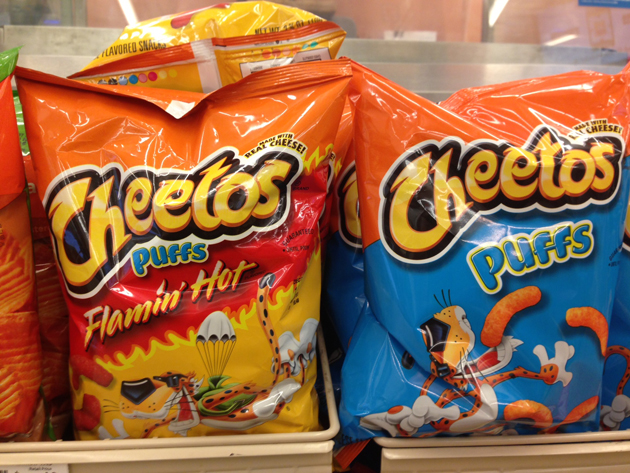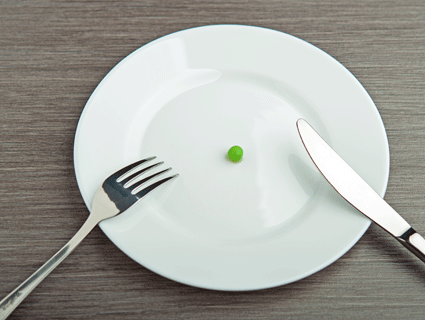The Dollar General in Austin’s gritty northeast—the neighborhood where I grew up—is a squat, warehouselike structure about twice the size of a suburban convenience store. Amid the dull flicker of fluorescent lights and the grinding hum of a compressor struggling to power a long freezer case, I’m in search of affordable and nutritious food with Melissa Helber, social-services outreach supervisor of a local food bank. The pickings are slim: We wander past two-liter jugs of Dr Pepper at the incredible price of four for $5; value-size boxes of Chocolate Lucky Charms cereal, $3.50; a wall of bagged candy, $1 each. Helber says the prices are why many of her clients shop here: The Supplemental Nutrition Assistance Program (SNAP), also known as food stamps, is stingy (about $11 a day for a family of three around here), but it’s relatively open on how recipients spend their benefits. It bans alcohol and “hot food”—say, a rotisserie chicken—but almost everything you could find in Dollar General’s grocery section, from sodas to M&M’s, is fair game.
If you’re wondering why SNAP would subsidize junk food, you’re not alone. Recently, the program has been in the headlines mostly because of Republican efforts to slash benefits. But even among its supporters, there has been a growing movement to rethink how the benefit is targeted. In a 2012 report, a high-profile group of nutrition researchers urged the US Department of Agriculture to run pilot programs to test the effect of banning junk food from SNAP purchases (PDF). In a June 2013 letter to Congress, a group of mayors, including Chicago’s Rahm Emanuel and Newark’s Cory Booker (now the junior senator from New Jersey), echoed that call.
The argument has undeniable appeal: Why should the already-frayed federal safety net underwrite Coca-Cola’s balance sheet? But the junk-food industry has fought hard to maintain the status quo, lobbying heavily against attempts to impose limits.
Instinctively, I’d find myself on the side of the reformers—anything to ratchet down Americans’ consumption of empty calories. But deeper into the aisles of Dollar General, I begin to waver. Helber asks me to consider a single mother supporting two kids on a wage of about $9.50 an hour—a typical income for the people served by her food bank, even amid Austin’s ever-soaring tech economy. Helber points out some of the hard decisions the mother would have to make. At $5, a pound of hamburger would be a solid choice—but she’d still have to get buns, condiments, and sides. By contrast, individual pepperoni pizzas are just a buck each, as is a five-pack of chicken-flavored ramen noodles.
So what about offering SNAP shoppers a carrot of incentives rather than a stick of restrictions? One USDA pilot program in Massachusetts provides a credit of 30 cents for every SNAP dollar spent on fruits and vegetables. The preliminary data shows the program resulted in a 25 percent increase in produce consumption. A similar program that doubles SNAP expenditures at farmers markets—you get $2 worth of fresh produce for every SNAP dollar you spend—has shown similar promise.
But programs like these cost money—and the prevailing debate in Washington now is about how to cut SNAP funding, not how to improve it. Those in favor of gutting the program argue that its $80 billion annual price tag is too heft. But 65 million Americans, about 1 in 5, have incomes low enough to qualify for SNAP—that is, income at or below 1.3 times the federal poverty line. Of them, around 47 million—nearly half of them children—actually get benefits. And more than 50 percent of all benefits go to households with incomes of less than half of the poverty line (about $9,800 for a family of three in 2013).
Then there’s the problem of access. Most incentive programs assume that you can easily get to a store that sells fresh produce—which you won’t find at most Dollar Generals. The USDA estimates that 23.5 million Americans live in food deserts, poor neighborhoods where the nearest grocery store is more than a mile away. (A mile might not sound that far, but for those without reliable transportation, it is: Imagine lugging home a week’s worth of food on foot, with kids in tow.)
I left the Dollar General realizing that dictating what you can buy with food stamps is the kind of thing that only sounds good to people who don’t actually have to survive on a poverty income. No one denies me the occasional candy bar or Coke; why would I feel entitled to exert that kind of control over poor people? And guess what: SNAP recipients already eat more virtuously than the rest of us. A 2008 USDA report found that they are less likely than those with higher incomes to consume at least one serving of sweets or salty snacks per day. More recently, a 2015 USDA study concluded that, adjusting for demographic differences, people who take SNAP benefits don’t consume any more sugary drinks than their low-income peers who aren’t in the program.
Given those findings, limiting SNAP families’ already-limited choices is just a gratuitous slap in the face. I say, drop the stick and subsidize carrots. There’s precious little appetite in Congress to broaden programs that give SNAP families incentives to buy vegetables; the 2014 farm bill, signed by President Obama last February, included $8.6 billion in overall funding cuts to the program over the next decade (a fraction of what SNAP’s GOP critics pined for). But the idea of subsidizing real-food purchases for SNAP households isn’t dead—the farm bill also delivered $20 million annually over the five next years to continue evaluating the already-existing pilot projects.
















